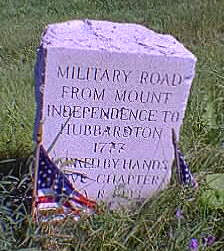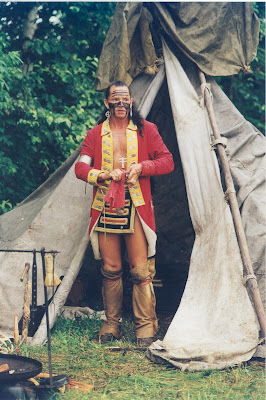 The Marquis de Lafayette may not be a household name in America, but without him this country might not even exist. Even as a new documentary film traces Lafayette’s descent from one of the most famous men on the planet to relative historical obscurity, the Vermont Division for Historic Preservation offers visitors the chance to “meet” this extraordinary character.
The Marquis de Lafayette may not be a household name in America, but without him this country might not even exist. Even as a new documentary film traces Lafayette’s descent from one of the most famous men on the planet to relative historical obscurity, the Vermont Division for Historic Preservation offers visitors the chance to “meet” this extraordinary character.
On Saturday, September 25, at 1:00 p.m. at the Mount Independence State Historic Site British actor-playwright Howard Burnham will portray Lafayette in his one-man costumed program, “Liberty now has a new country!: The Marquis de Lafayette.”
“Lafayette’s story is a truly remarkable one, and Howard Burnham captures the spirit of this gallant Frenchman who came to America as a young man to fight for the cause of liberty during the Revolutionary War,” said Elsa Gilbertson, Regional Historic Site Administrator for the Vermont Division for Historic Preservation.
A new documentary, “Lafayette: The Lost Hero,” recently debuted on Vermont Public Television and other stations around the nation, telling the story of the aristocrat who led troops against the British- befriended Gen. George Washington and served with him at Valley Forge- and helped bring France into the war on the colonists’ side.
Burnham will portray Lafayette on his triumphal tour of America in 1824 and 1825, when President James Monroe invited him to visit in part to celebrate the nation’s 50th anniversary.
“At the time, Lafayette was wildly popular all over the country,” Gilbertson said. “He was welcomed as a hero- Fayetteville, North Carolina was named after him- and the United States Congress voted him a gift of $200,000 and a township in Florida.”
Lafayette will reflect on his long and eventful life and will transport the audience to Camden, South Carolina, where he laid the foundation stone for the monument to Baron de Kalb – with whom he came to America in 1777 – as well as eulogize the Baron.
General Lafayette’s aide de camp, Michel Capitaine du Chesnoy, created an important map of Mount Independence and Fort Ticonderoga, showing it after the Americans retreated in July 1777.
“Lafayette visited every state during his visit, and on June 30, 1825, he traveled south on Lake Champlain past Mount Independence on the steamboat Phoenix on his way to Whitehall, New York, at the end of his visit through Vermont,” Gilbertson said.
The program is sponsored by the Mount Independence Coalition and Vermont Division for Historic Preservation, and admission is $5.00 for adults and is free for children under 15. It also includes admission to the museum and all the trails.
Burnham has given six performances at Mount Independence in recent years, including interpretations of British figures Gen. John Burgoyne- Lord Charles Cornwallis- and Maj. Banastre Tarleton, as well as Americans like Gen. Horatio Gates and Thomas Paine.
The Mount Independence State Historic Site is one of the best-preserved Revolutionary War sites in America.
On July 5, 1777, faced with a British force more than twice his size that had occupied a position from which they could bombard him with impunity, General Arthur St. Clair withdrew from Mount Independence and nearby Fort Ticonderoga without firing a shot.
Though his actions helped preserve the army, Congress was outraged and censured St. Clair for the loss. He later argued that his conduct had been honorable- demanded review by a court martial- and was ultimately exonerated.
The site is located near the end of Mount Independence Road, six miles west of the intersections of Vermont Routes 22A and 73 near Orwell village- carefully follow the signs. Regular hours are 9:30 a.m. to 5:00 p.m. daily through October 12.
Call (802) 948-2000 for more information or visit: www.HistoricVermont.org/sites.




